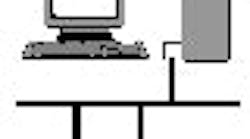But when we installed our site’s first DCS, there was great consternation about the instrument techs poking around in the DCS, which was seen as a delicate assemblage only the properly ordained and sanctified should ever touch.
Our instrument shop was populated entirely by people who had been operators. Some, but not all, were skilled and motivated individuals. Our work rules and overtime guidelines made picking and choosing who worked where messy, if not entirely forbidden. Even in those days, the reliability of the systems was such that training 15 or 20 people and getting them enough practice to stay proficient was thought impossible. So we drew a line.
The line was the marshalling panel where multi-pair cables from the field split off to the DCS I/O. This would be as far as any ordinary instrument tech or his supervisor would venture. The other side was the hallowed DCS ground, reserved only for chosen initiates and engineers. Hence was born the “dysfunction junction.”
This self-imposed division persists in plants to this day, reinforced by sales people who, for the most part, deal exclusively with either one side (field stuff) or the other (systems). Our organizations—even at the corporate level—reflect this division, and AMS, as most of us are attempting to apply it, is also an appliance that both serves and suffers from this mutation we brought upon ourselves decades ago.
About 10 years ago, a former employer determined that automation and AMS were strategic investments that would put our chemical plants a step ahead of the competition. The vision was endorsed all the way to the senior VP level, and we used this strategy to support the decision to become early adopters of Foundation fieldbus in 1998.
At brownfield sites, where late-generation legacy DCS platforms supported only Modbus and proprietary protocols for digital integration, selected sites undertook a variety of projects to advance the vision and demonstrate the value of AMS, but as the investment at the systems level was substantial and relatively recent, no one thought any wholesale revamp or upgrade of the DCS was justifiable.
Several plants were chosen to implement AMS using their installed base of instruments. Multiplexers brought the instrument diagnostics into a central server for viewing configuration data and diagnostics. But a year or two down the road, most sites were seeing little value from the investment. The AMS server sat in the instrument shop and was used rarely because the work processes remained the same. One site had significant benefits because of an interested, motivated local champion.
This case persists today. End users who are among the most sophisticated, innovative and wealthy practitioners of advanced automation and control say they are unable to justify replacing legacy DCS platforms, even those that were installed in the 80s! The control systems manager from an Illinois refinery once told me the lost margin from having the advanced controls offline for the duration of any upgrade was enough by itself to sink any attempt to justify a revamp.
The same is true of nearly all of today’s AMS offerings. A trained and process-savvy person who cares needs to spend a lot of his or her time looking at it. Users who have tried to impose the old paradigms on Foundation fieldbus (FF) have had similar experiences.
Every system benefits from having properly trained individuals examining diagnostics and error messages, but fieldbus has the power to free those savvy techs from tedious hours watching screens. With FF, the system boundaries extend to the devices at the ends of the wires. Fieldbus integrates the field device’s diagnostics with the control scheme, enhancing process integrity and asset management.
That Illinois refinery noted above has installed a lot of fieldbus since I had that conversation with its manager.
| About the Author |







